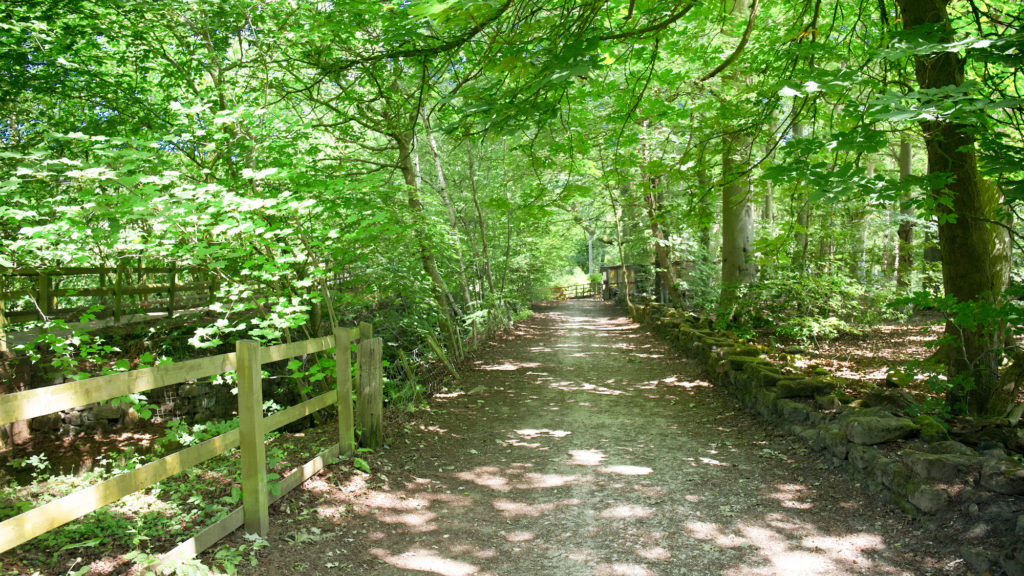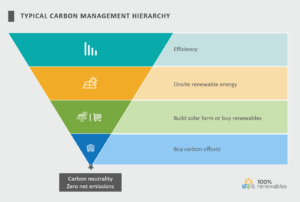I’m asking the Question; Can We Plant Our Way Out of Trouble?
I keep reading that we can’t plant our way out of the problem. So the reason for this post is to look at carbon offset and answer the question; Why not?
Let’s be straight from the get-go. I’m not anti-tree planting, far from it.
On the contrary, planting trees (ensuring ‘right-tree-right-place’) is a crucial part of solving the climate crisis. That’s because trees suck up the carbon dioxide that’s already in the air and store it in their structures. Planting saplings to counterbalance the fossil fuels we burn is called Carbon Offsetting.
Some people are against offsetting, because their concern is the method will be used as an excuse for not putting other transformative measures in place. But I see it as an important part of the carbon reduction hierarchy and here are two reasons why;
The Cynic’s Reason against Carbon Offset
Let’s look at the organisation which only plants trees or buys carbon credits but does no other pro-sustainability activity. It’s far from adequate, but if they’re planning no other changes to their behaviours, at the very least, some of their greenhouse gas emissions are counterbalanced.
The Advocate’s Reason in Favour
There are many companies and individuals who are working hard to adapt their practices. Yours may be one of these. This takes time and often the technologies aren’t available (or affordable yet) to shift to renewables. Let’s take unavoidable car travel (EV batteries aside) as an example, where there are no public transport alternatives. For those companies, choosing to transition, carbon offsetting plays a necessary part of the process whilst other activities catch up.
Why Planting Trees Alone is not Enough
However, offsetting alone will not return our natural world to a safe state. The reason is about balance. We are currently confronted with 416 parts per million (ppm) of CO2 in the air. Pre industrial revolution the CO2 load was 280ppm and since we started burning fossil fuels that number has risen and risen, along with global average temperatures.
The upper limit that our atmosphere can tolerate is 450ppm before we reach a tipping point of no return. As long as we are still adding more carbon by burning coal, oil, gas and wood the scale will not tilt in the right direction. Sure, if we suck some of the carbon out of the atmosphere using methods like tree planting and restoring peat bogs, we do reduce the load. But if we continue to add to it at the same time, by persistently burning fossil fuels, the levels will keep creeping up, until we reach and surpass that critical point.
For the balance to shift, we have to work on both sides of the equation, so it’s essential to stop adding to the pool at the same time as removing it. We do this by following the carbon reduction hierarchy.
In the first instance the hierarchy demands use less energy by efficiency. The next step on the ladder is sourcing energy from alternative methods, ie renewables either in-house (micro-generation) or by purchasing certified green energy. Finally, we need to offset the amount that cannot be reduced or replaced with alternatives from the system.
Other Green House Gases
Carbon dioxide is not the only gas causing global temperatures to rise, but it is the biggest contributor by 76%. Bill Gates recently highlighted the staggering number of 51 billion tonnes of gases emitted annually, which need to be addressed to reach the planet wide goal of net zero emissions by 2050.
If you work in the food sector, any cooling processes (freezing, chilling etc) using refrigerants, usually other gases with climate warming effects. These gases are facing increasingly stringent regulation in the fight to reach net zero.
What’s Your Carbon Reduction Plan
Now that we’ve established that planting trees is only part of the solution to combatting climate change, the questions remain. Do you need support understanding why it’s important that your business develops a Net Zero strategy? Are you aware of the commercial reasons and customer trends behind adopting a carbon reducing policy? Would a conversation providing a little direction be helpful?
For answers to all these questions, as well as the best tree planting schemes, contact us for a friendly, no obligation chat.



Recent Comments